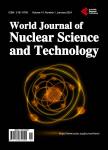Brownian Motion of Radioactive Particles: Derivation and Monte Carlo Test of Spatial and Temporal Distributions
Brownian Motion of Radioactive Particles: Derivation and Monte Carlo Test of Spatial and Temporal Distributions作者机构:Department of Physics Trinity College Hartford CT USA
出 版 物:《World Journal of Nuclear Science and Technology》 (核科学与技术国际期刊(英文))
年 卷 期:2018年第8卷第2期
页 面:86-119页
学科分类:07[理学] 0701[理学-数学] 070101[理学-基础数学]
主 题:Brownian Motion Diffusion Radioactive Decay Fokker-Planck Equation Langevin Equation Monte Carlo Simulation First-Passage Time Wiener Process Bernoulli Process Survival Function Moment-Generating Function
摘 要:Stochastic processes such as diffusion can be analyzed by means of a partial differential equation of the Fokker-Planck type (FPE), which yields a transition probability density, or by a stochastic differential equation of the Langevin type (LE), which yields the time evolution of a statistical process variable. Provided the stochastic process is continuous and certain boundary conditions are met, the two approaches yield equivalent information. However, Brownian motion of radioactively decaying particles is not a continuous process because the Brownian trajectories abruptly terminate when the particle decays. Recent analysis of the Brownian motion of decaying particles by both approaches has led to different mean-square displacements. In this paper, we demonstrate the complete equivalence of the two approaches by 1) showing quantitatively and operationally how the probability densities and statistical moments predicted by the FPE and LE relate to one another, 2) verifying that both approaches lead to identical statistical moments at all orders, and 3) confirming that the analytical solution to the FPE accurately describes the Brownian trajectories obtained by Monte Carlo simulations based on the LE. The analysis in this paper addresses both the spatial distribution of the particles (i.e. the question of displacement as a function of diffusion time) and the temporal distribution (i.e. the question of first-passage time to fixed absorbing boundaries).



